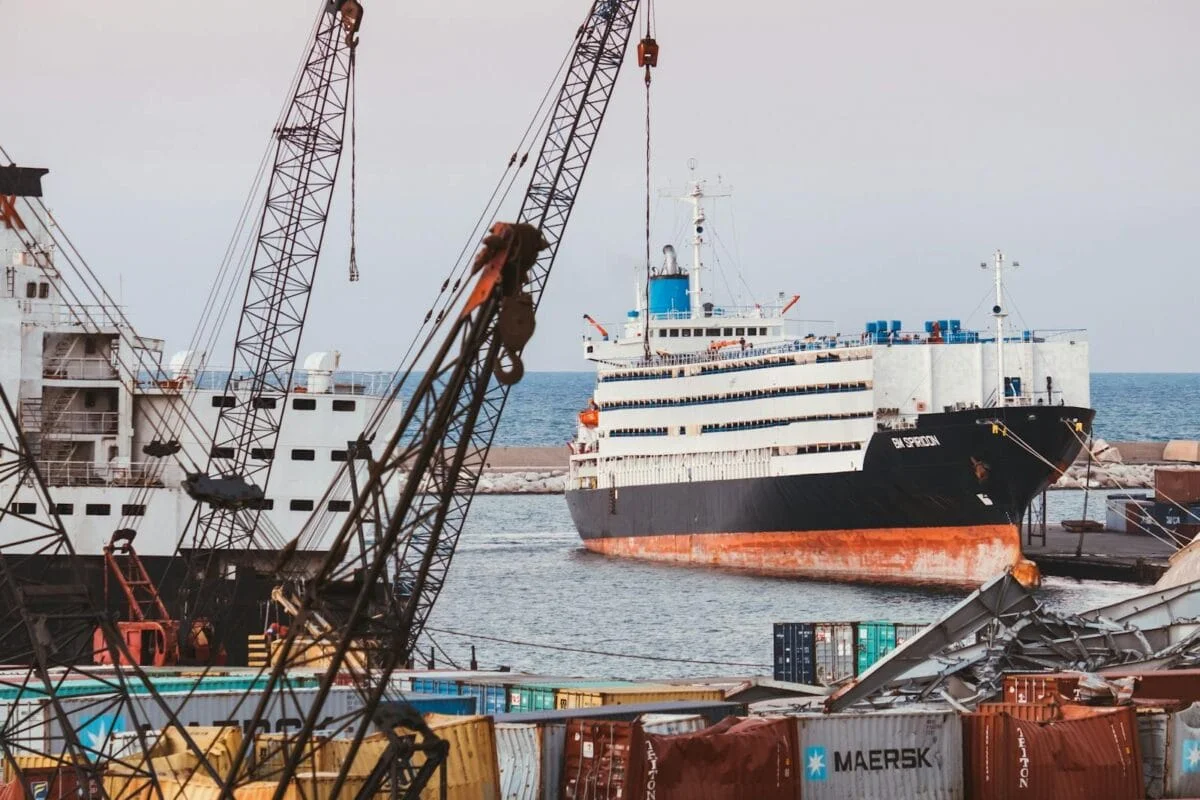In a critical moment for the U.S. economy, the East Coast port strike has been tentatively resolved, providing much-needed relief for businesses and supply chains. The International Longshoremen’s Association (ILA) and the United States Maritime Alliance (USMX) reached an agreement to suspend the strike until January 15, 2025. This deal includes a significant wage increase of 62% spread over six years, a major victory for the striking workers who had been advocating for better wages and job security.
The strike led to a complete shutdown of operations at 14 major ports along the East and Gulf Coasts, creating significant delays and bottlenecks in trade. The workers’ primary concerns revolved around wages and the looming threat of automation, which they believe endangers their jobs. While this temporary agreement provides a reprieve, there is still much to be done to address these long-term issues.

The Impact of the Strike: Widespread Disruption to U.S. Trade
The effects of the East Coast port strike were felt across the country. Critical items such as food, electronics, and medical supplies were delayed as port operations came to a halt. Businesses that depend on these ports were left scrambling to find alternative routes, often opting for more expensive West Coast ports or airfreight solutions. This not only increased costs but also led to unpredictable shipping schedules, leaving many companies in a logistical bind.
Effects on Supply Chains
- Significant delays in receiving essential goods.
- Increased shipping costs due to rerouted shipments.
- Product shortages in retail sectors, particularly electronics and medical supplies.
Example: A large electronics retailer faced weeks of delays in receiving high-demand items, leading to empty shelves and frustrated customers during peak shopping periods.
Ports Reopen: A Positive Step for Trade and the Economy
The tentative agreement has been welcomed by both government officials and the business community. President Biden praised the deal, emphasizing the critical need to keep ports operational to ensure the availability of essential goods across the country. The reopening of these ports signals a return to normalcy for industries that rely on efficient trade routes, but the full recovery of supply chains will take time.
Clearing the Backlog
- Ports are now working around the clock to clear the backlog of shipments.
- It is estimated that it will take several weeks to restore normal operations as the volume of delayed goods is significant.
Statistic: According to industry experts, $300 million worth of goods were stalled daily due to the strike, highlighting the scale of the disruption.

Long-Term Solutions: Automation vs. Job Security
While the immediate crisis has been resolved, the question of how to handle future disruptions remains. A significant point of contention between workers and port authorities is the role of automation in port operations. Many workers are worried that increased automation could lead to job losses, while the port authorities argue that automation is necessary to remain competitive in the global market.
H2: Addressing Automation
- The agreement does not fully resolve concerns around automation, but there are discussions about introducing retraining programs for workers.
- Automation could lead to faster port operations but poses a threat to traditional longshoreman jobs.
Example: Ports in countries like Singapore have fully automated large parts of their operations, resulting in increased efficiency but significant reductions in the workforce. The U.S. will need to find a balance between maintaining jobs and staying competitive.
Related SEO Keywords: Labor dispute at East Coast ports, port strike labor agreement, logistics challenges during East Coast strike
What Businesses Can Expect Moving Forward
For businesses affected by the strike, now is the time to evaluate and adapt their supply chain strategies. While the ports are back in operation, it may take some time before shipping schedules return to normal. Many companies are already looking at ways to diversify their logistics strategies to avoid over-reliance on any single port.
H2: Supply Chain Adjustments
- Diversifying shipping routes to avoid future disruptions.
- Investing in more flexible logistics solutions, such as warehousing and alternative ports.
- Exploring opportunities for local sourcing to reduce dependence on imports.
Quote: “This strike has shown us the importance of being flexible with supply chain operations. Relying too heavily on a single route or port can leave businesses vulnerable to unexpected disruptions,” said a logistics consultant in New York.
Related SEO Keywords: Reopening of East Coast ports, East Coast port strike settlement
The Future of Labor Relations in U.S. Ports

The temporary agreement between the ILA and USMX gives both sides time to work out a more permanent solution. However, labor relations in the port industry are likely to remain a contentious issue. Striking the right balance between worker protections and technological advancements will be key to preventing future disruptions.
H2: Potential for Future Strikes
- Without a long-term solution, the threat of future strikes looms large.
- Ensuring that workers feel secure in their roles while allowing for necessary technological advancements will be crucial to maintaining stability in the industry.
Statistic: Labor disputes in major U.S. ports, including this strike, are estimated to have cost the economy over $2.5 billion in 2023 alone, emphasizing the need for better planning and negotiation strategies moving forward.
The Road to Recovery and Future Stability
The resolution of the East Coast port strike provides immediate relief for businesses and consumers, but the underlying issues that led to the strike have not been fully resolved. Automation, job security, and labor relations will continue to be hot topics as both workers and employers seek to modernize operations while protecting livelihoods. For now, businesses can focus on recovering from the delays, but long-term stability will require more comprehensive solutions to these complex issues.
FAQ Section
Q: How long will it take for the ports to return to normal operations?
A: It is expected to take several weeks to clear the backlog of shipments, though the ports are working around the clock to speed up the process.
Q: Why did the strike happen in the first place?
A: The strike was primarily over concerns about wages and job security, particularly regarding the potential job losses due to increased automation at the ports.
Q: How did the strike affect businesses?
A: Businesses faced delayed shipments, increased costs from rerouting goods, and supply shortages, particularly in sectors that rely heavily on imports like electronics and retail.
Q: Will there be more strikes in the future?
A: It’s possible. The current agreement is only temporary, and many of the issues around automation and job security have yet to be fully resolved.
Q: What should businesses do to avoid future disruptions?
A: Companies should diversify their supply chains by exploring alternative shipping routes, investing in local sourcing, and improving logistics flexibility.
click here for more


